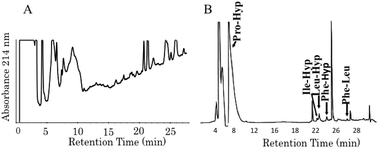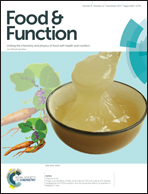The presence of food-derived collagen peptides in human body-structure and biological activity
Abstract
It has been demonstrated that the ingestion of some protein hydrolysates exerts health-promoting effects. For understanding the underlying mechanisms responsible for these effects, the identification of bioactive peptides in the target organ is crucial. For this purpose, in vitro activity-guided fractionation for peptides in the protein hydrolysate has been performed. However, the peptides in the hydrolysate may be further degraded during digestion. The concentration of the active peptides, which were identified by in vitro activity-guided fractionation, in human blood is frequently very low (nanomolar levels). In contrast, micromolar levels of food-derived collagen peptides are present in human blood. Pro-Hyp, one of the major food-derived collagen peptides, enhances the growth of fibroblasts and synthesis of hyaluronic acid. These observations partially explain the beneficial effects of collagen hydrolysate ingestion on the enhancement of wound healing and improvement in the skin condition. The recent advancement involving liquid chromatography and mass spectrometry coupled with a pre-column derivatization technique has enabled the identification of food-derived peptides at nanomolar levels in the body post-ingestion of protein hydrolysates. Thus, this technique can be used for the identification of bioactive food-derived peptides in the body.

- This article is part of the themed collection: International Symposium on Bioactive Peptides


 Please wait while we load your content...
Please wait while we load your content...